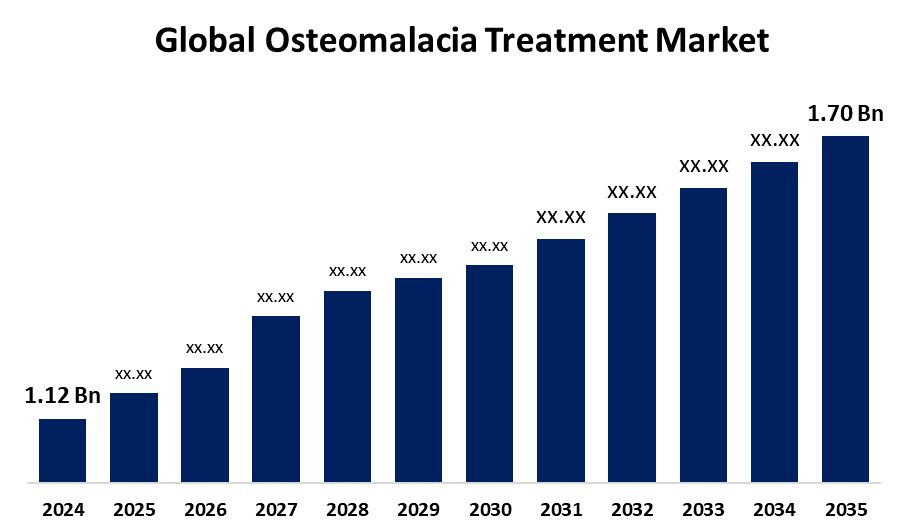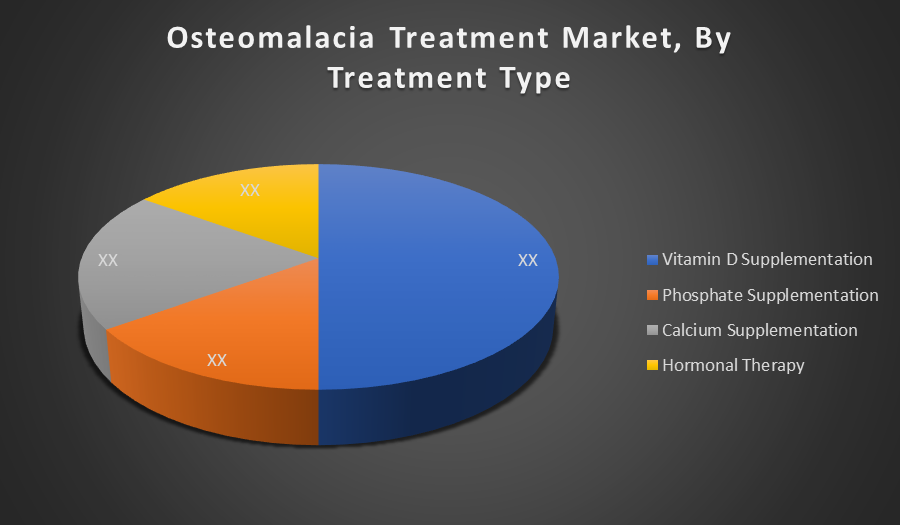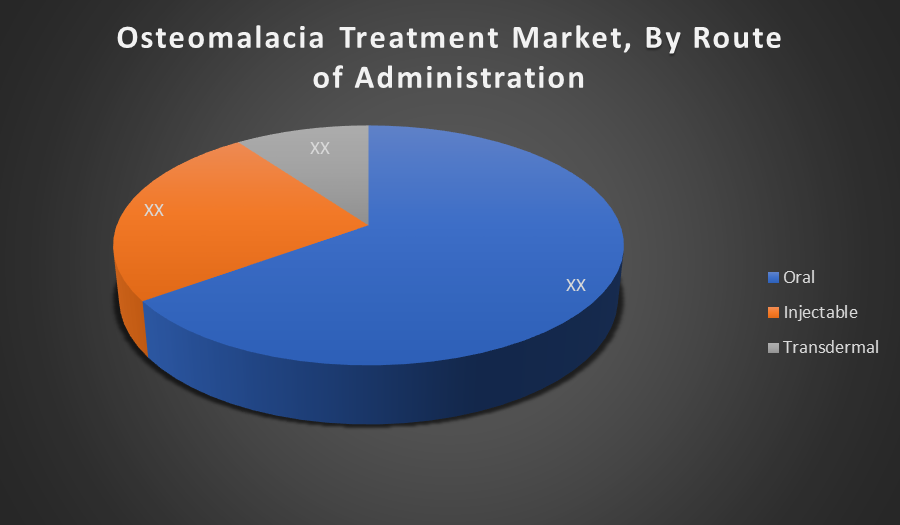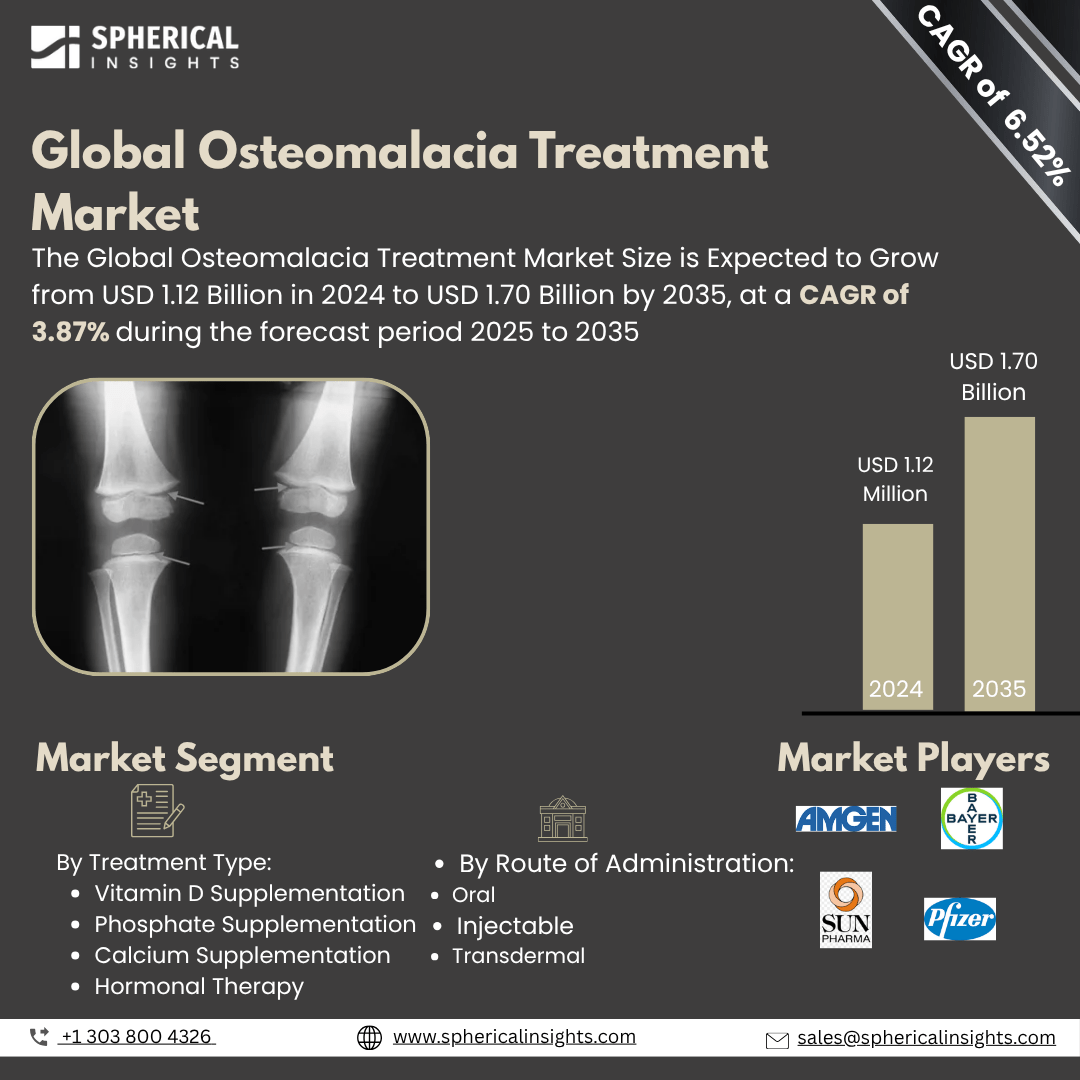- As per Spherical Insights & Consulting, The Global Osteomalacia Treatment Market Size is Expected to Grow from USD 1.12 Billion in 2024 to USD 1.70 Billion by 2035, at a CAGR of 3.87% during the forecast period 2025 to 2035, owing to the launch of new therapies in the market and the rise in the number of cases.
- The leading Osteomalacia Treatment Market Companies such as Amgen, Bayer AG, Sun Pharmaceutical, Pfizer, Merck & Co., GlaxoSmithKline, Teva Pharmaceuticals, Roche, Johnson & Johnson, Mylan Pharmaceuticals, Sanofi, Bristol-Myers Squibb, Abbott Laboratories, Novartis, Eli Lilly, and Others.
Osteomalacia Treatment Market: Understanding and Treatment Algorithm:
Osteomalacia is a bone disorder characterized by softening due to defective bone mineralization, commonly caused by vitamin D deficiency. It leads to bone pain, muscle weakness, and increased fracture risk. The condition primarily affects adults and can result from inadequate nutrition, malabsorption, or certain medical conditions affecting vitamin D metabolism.

Osteomalacia Diagnosis:
Diagnosis of osteomalacia involves clinical evaluation of symptoms like bone pain and weakness, alongside blood tests measuring vitamin D, calcium, phosphate, and alkaline phosphatase levels. Imaging studies such as X-rays or bone scans detect characteristic bone changes. Bone biopsy is rarely used but can confirm defective mineralization in uncertain cases.
Osteomalacia Treatment:
Treatment focuses on correcting vitamin D deficiency through supplementation, often combined with calcium and phosphate supplements. Addressing underlying causes like malabsorption is essential. Severe cases may require higher doses or intravenous administration. Regular monitoring ensures improved bone mineralization, symptom relief, and prevention of complications like fractures.
Osteomalacia Treatment Epidemiology:
The disease epidemiology covered in the report provides historical as well as forecasted epidemiology segmented by Total Diagnosed Incident Population of Osteomalacia Treatment, Gender specific Diagnosed Incidence of Osteomalacia Treatment, Type specific Diagnosed Incidence of Osteomalacia Treatment, Age specific Diagnosed Incidence of Osteomalacia Treatment, Diagnosed Incident Population based on Primary Site of Osteomalacia Treatment, and Diagnosed Incident Population based on Histologic Classification of Osteomalacia Treatment Tumour in the global market covering North America, Europe, Asia-Pacific, Latin America, the Middle East, and Africa from 2024 to 2035.
Principal Insights:
This section offers a global overview of Osteomalacia Treatment epidemiology in major markets worldwide.
Country Wise Osteomalacia Treatment Multiforme Epidemiology:
- The epidemiology segment provides Osteomalacia Treatment prevalence data and findings across key regions worldwide, including North America, Europe (Germany, France, Italy, Spain, and the United Kingdom), Asia-Pacific (including Japan), Latin America, the Middle East, and Africa.
Osteomalacia Treatment: Recent Developments:
- In November 2023, Entera Bio Ltd. announced a significant regulatory milestone for its oral PTH (1-34) peptide, EB613. The company submitted a full qualification plan to the FDA, seeking approval to use bone mineral density (BMD) as a surrogate endpoint in its Phase 3 program for osteoporosis treatment.
Osteomalacia Treatment Marketed Drugs:
• Calcitriol: Roche
Calcitriol is the active form of vitamin D3 used to treat osteomalacia caused by vitamin D deficiency or metabolic disorders. It enhances calcium absorption and bone mineralization. Calcitriol is FDA-approved for conditions involving impaired calcium metabolism, including renal osteodystrophy and hypocalcemia associated with osteomalacia.
• Ergocalciferol (Vitamin D2): Mylan Pharmaceuticals
Ergocalciferol is a vitamin D2 supplement used to treat vitamin D deficiency-related osteomalacia. It helps restore adequate vitamin D levels, promoting calcium absorption and bone health. It is widely prescribed for patients with nutritional deficiencies and certain metabolic bone disorders.
Osteomalacia Treatment: Emerging Therapies:
- OST-101: It is a novel recombinant enzyme replacement therapy in early clinical trials for osteomalacia. It aims to restore phosphate metabolism by targeting fibroblast growth factor 23 (FGF23) pathways, improving bone mineralization, and reducing symptoms in patients with resistant or hereditary forms of osteomalacia.
- FGX-200: It is a monoclonal antibody targeting fibroblast growth factor 23 (FGF23), currently in Phase II trials. It aims to normalize phosphate levels and enhance bone mineralization in patients with X-linked hypophosphatemia-related osteomalacia, offering a targeted approach for those unresponsive to conventional supplementation.
Osteomalacia Treatment Market Outlook:
- The osteomalacia treatment market includes therapies aimed at correcting bone softening caused by vitamin D deficiency and mineral imbalances. It covers vitamin D, calcium, and phosphate supplementation, along with hormonal therapies, delivered via oral, injectable, or transdermal routes to restore bone health and prevent complications.
- Increasing prevalence of vitamin D deficiency, growing aging populations prone to bone disorders, and rising awareness of osteomalacia drive market growth. Enhanced diagnostic capabilities and availability of various supplementation options further boost treatment adoption. Lifestyle changes and limited sun exposure also contribute to higher demand.
- Opportunities exist in developing advanced, patient-friendly formulations, expanding in emerging regions with rising healthcare access, and addressing unmet needs in severe or resistant cases. Increasing government health programs focused on nutrition and bone health also create avenues for market expansion and innovative product introductions.
- Governments globally promote vitamin D supplementation and nutritional awareness programs to combat deficiency. Public health campaigns and fortification policies aim to reduce osteomalacia incidence. Funding for bone health research and improved healthcare infrastructure in developing regions supports market growth and treatment accessibility.
- Limited awareness in rural areas and misdiagnosis hinder timely osteomalacia treatment.
- The market is projected to grow steadily due to increasing vitamin D deficiency prevalence and expanding supplementation awareness.
Osteomalacia Treatment Market Segmentation:
By Treatment Type:
- Vitamin D Supplementation
- Phosphate Supplementation
- Calcium Supplementation
- Hormonal Therapy

Vitamin D Supplementation holds the largest market share as it directly addresses the primary cause of Osteomalacia, vitamin D deficiency. It is widely recommended due to its efficacy in promoting calcium absorption and bone mineralization. The availability of various vitamin D formulations and increasing awareness further boost its dominance in treatment protocols globally.
By Route of Administration:
- Oral
- Injectable
- Transdermal

The Oral route dominates because it offers convenience, cost-effectiveness, and patient compliance, especially for long-term vitamin D and calcium supplementation. Oral medications are easily administered in outpatient settings without specialized equipment, making them the preferred choice for managing osteomalacia in both developed and developing regions.
Regional Segment Analysis of the Osteomalacia Treatment Market:
North America holds the largest share due to its advanced healthcare infrastructure, high awareness of bone health, and widespread vitamin D deficiency screening. Well-established reimbursement policies and extensive research in bone disorders drive demand for effective osteomalacia treatments. Additionally, growing elderly populations and lifestyle factors contributing to vitamin D deficiency contribute to sustained market dominance in this region.
Asia-Pacific is the fastest-growing market due to increasing awareness of osteomalacia and vitamin D deficiency, especially in emerging economies. Rapid urbanization, changing lifestyles, and expanding healthcare access are boosting diagnosis and treatment rates. Government initiatives promoting nutritional supplementation and rising investments in healthcare infrastructure are accelerating market growth across countries like India, China, and Southeast Asia.
Osteomalacia Treatment Market Key Companies:
- Amgen
- Bayer AG
- Sun Pharmaceutical
- Pfizer
- Merck & Co.
- GlaxoSmithKline
- Teva Pharmaceuticals
- Roche
- Johnson & Johnson
- Mylan Pharmaceuticals
- Sanofi
- Bristol-Myers Squibb
- Abbott Laboratories
- Novartis
- Eli Lilly
- Others
Osteomalacia Treatment Therapeutics Market Report Scope:
- The Osteomalacia therapeutics market report provides a detailed overview, covering its causes, symptoms, disease progression, and existing treatment options.
- Detailed insights into Osteomalacia Treatment’s epidemiology and therapeutic approaches are included.
- Additionally, a comprehensive review of existing and emerging Osteomalacia Treatment therapies is provided, including an evaluation of new treatments expected to influence the current Osteomalacia Treatment market landscape.
- The report includes a detailed review of the Osteomalacia therapeutics market, both historical and forecasted, highlighting the global drug reach.
- The Patient-Based Osteomalacia Treatment Market Forecasting report offers valuable insights into trends shaping the global Osteomalacia Treatment market, helping to develop effective business strategies.
Osteomalacia Treatment Market Report Insights:
- Forecasting Market Trends Based on Patient Data and Disease Rates
- Osteomalacia Treatment Therapeutic Approaches in Osteomalacia Treatment
- Review Of Drugs in Development for Osteomalacia Treatment
- Market, Growth, and Trends in Osteomalacia Treatment
- Market Opportunities in Osteomalacia Treatment
- Effects Of Future Therapies on Osteomalacia Treatment
Osteomalacia Treatment Market Report: Key Strengths
- 15 Years Osteomalacia Treatment Market Forecast
- Global Coverage
- Osteomalacia Treatment Epidemiology Segmentation
- Key Cross Competition
Osteomalacia Treatment Market Report Assessment
- Present Practices in the Osteomalacia Treatment Market
- Review of Investigational Osteomalacia Treatment Drugs
- Attractiveness of the Osteomalacia Treatment Drug Market
- Osteomalacia Treatment Market Drivers
- Osteomalacia Treatment Market Barriers
- SWOT
- Attribute Analysis
Market Segment:
This study forecasts revenue at the global, regional, and country levels from 2020 to 2035. Spherical Insights has segmented the Osteomalacia Treatment market based on the following segments:
Global Osteomalacia Treatment Market, By Treatment Type
- Vitamin D Supplementation
- Phosphate Supplementation
- Calcium Supplementation
- Hormonal Therapy
Global Osteomalacia Treatment Market, By Route of Administration
- Oral
- Injectable
- Transdermal
Global Osteomalacia Treatment Market, By Regional Analysis
- North America
- Europe
- Germany
- UK
- France
- Italy
- Spain
- Russia
- Rest of Europe
- Asia Pacific
- China
- Japan
- India
- South Korea
- Australia
- Rest of Asia Pacific
- South America
- Brazil
- Argentina
- Rest of South America
- Middle East & Africa
- UAE
- Saudi Arabia
- Qatar
- South Africa
- Rest of the Middle East & Africa






